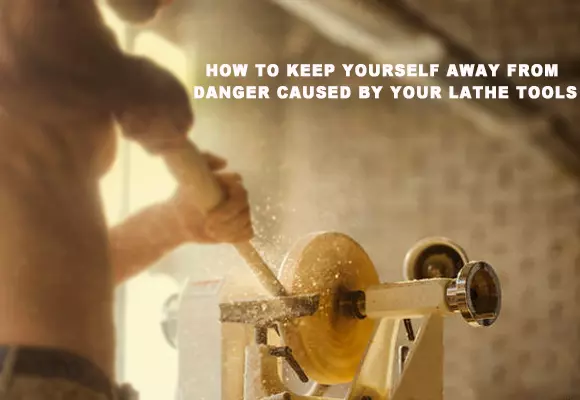
How to Keep Yourself Away From Danger Caused By Your Lathe Tools
In machine manufacturing, turning is the most widely used one. In the factory, there’s a large number of lathes and people crowded in one place. With a wide range of processing and very many different kinds of tools used here, people’s safety on turning to process is particularly important.

To make sure we can do our work in a safe condition, we collect the main damages that happen in the factory, and there are three things you must know in turning. Key works we should do are as follows:
1. Damage caused by splashed chips and protection measures
In lathe processing, no matter what kind of steel your project is, it has good toughness. Chips are produced by turning riches plastic crimps, a sharp edge. So when you cut steel at a high speed will form a red, hot, and long chip, which is very easy to hurt people. And these long chips are often wound on workpieces, turning tools, and knife rest. So, these chips should be cleaned or broken with an iron hook in time. Sometimes we should stop the machine to clear those chips if necessary. But it is not allowed to clean or break them by hands. In order to avoid damage caused by hot chips, we often break them, control the direction of chip flow and add a variety of protective baffles. The measure we take to break chips is to grind out cutting grooves or steps on turning tools, or adopt an appropriate chip breaker and adopt a mechanical clamping tool.
2. Installation of workpieces
In the course of turning, there are a large number of damages caused by improper installation of workpieces, such as damages to machine tools, breaking or bumping of cutting tools, and falling or flying of workpieces. All of these may get people injured. Therefore, in order to ensure safety during turning processing, we must pay more attention to clamping workpieces. Choose appropriate fixtures for those workpieces of different sizes and shapes. No matter whether it’s a three-jaw or four jaw chuck or special fixtures, its connection with the spindle must be stable and reliable. When it comes to workpieces, we need to clamp them appropriately and tightened them. To tighten large pieces, you can use the sleeve to ensure that the workpiece can sustain high-speed rotation and strong cutting force without shifting, falling off, and throwing out.
3. Safe operation of turning machine
Before launching the machine, you should check your machine tool and confirm it is in a good condition. Make sure the clamping of the workpiece and cutting tool are in the correct position. Workpieces on the machine should be firm and reliable. If you need to change cutting tools on the machine, the first step is to stop your machine. Do not touch or wipe your workpiece with cotton thread when it is rotating. Cutting speed, feed, and laboring depth should be selected properly. It is not allowed to do overload processing. The head of your machine, your knife rest, and the surface of your machine must not place workpieces, work fixtures, or any other sundry. When using a file, you should move turning tools to a safe position. Except for specialized persons, no one should be allowed to use or maintain machine tools.


Remember these things in your mind and keep yourself away from danger. Always remember, safety is the first.